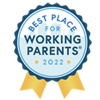This article provides information about Early Reading Literacy. Activities and developmental ideas are included.

Early Reading Skills for Young Learners, Birth to School Age
Reading and Writing
Developing early reading skills can be overwhelming for young learners, ages three through five years old. The intent of this article is to provide information and ideas to help develop these skills. There are many informal activities that parents can provide for their children. To begin, children learn through play. Play skills include hands on learning activities by using puzzles, blocks, and toys. Most importantly, develop a love for reading by providing books and print through daily reading activities.
Early Emergent Literacy Stages
Marie Clay believed that children learn to develop literacy skills from birth. She explained that these skills can be developed before children enter school. Some suggestions are listed below.
Encourage children to scribble and draw. Have them draw lines, circles and other shapes. It is not important that they know the name of the shape, but that they become familiar with the stroke of making the shape. Children will then be able to incorporate these skills when they begin to utilize print.
Children will soon understand that the formation of several letters leads to the formation of words.
Phonological Awareness
“Phonological Awareness is the understanding of different ways that oral language can be divided into smaller components and manipulated” (Chard and Dickson, 1999).
Activities:
- Identify rhyming words; hill, pill, spill
- Count the number of syllables in a word: children clap each syllable
- Alliteration: Identify more that one word in a sentence or phrase that begins with the same letter; Bubbling Brook, Sunny Saturday
- Count the words in sentences
Phonemic Awareness
“Phonemic Awareness is the ability to identify and manipulate individual sounds, phonemes, in spoken words” (Reading Rockets, 2021
Activities:
- Blend words by sounds; /f/, /a/, /t/, fat
- Rhyming game; Name words that rhyme with cat-sat, fat, hat, mat
- Rhyming game; Look at the word top, change the first letter to st, what is the new word, stop
Activities and Suggestions
1. Environmental print: street signs, billboards, etc.
2. Wordless books: have children write words or sentences telling about the illustrations.
3. Talk or sing nursery rhymes. Music helps children remember the words.
4. Develop beginning sounds, phonemic awareness; use picture cards, magazine pictures, calendars, picture books. Point to the picture, name the picture, and identify the beginning sound.
Use a graphic organizer to develop initial sounds. Fold a piece of paper into eight boxes. Show a picture, identify the picture, identify the sound. Record information on the organizer inside each square.


6. Read any story and change the character in the story
7. Children can go on a picture walk, tell what is happening in each picture and try to determine what the story is all about, main/central idea
8. Read any story. Focus on the beginning, middle, and end of the story. Fold a piece of paper into three parts. Label each part below. Children write information inside each square.

9. Read any story. Fold the paper into eight boxes. Label each box as shown below. Focus on the story elements. Children will draw pictures of each story element inside the square. Then write sentences about each box on the back of the paper. For example, The title of the story is _________. The characters in the story are _____________. Continue to write sentences for each box.

10. Create word banks related to a specific topic. For example, Camping. Write a list of possible words related to a topic. Use these words to write a story about camping.


